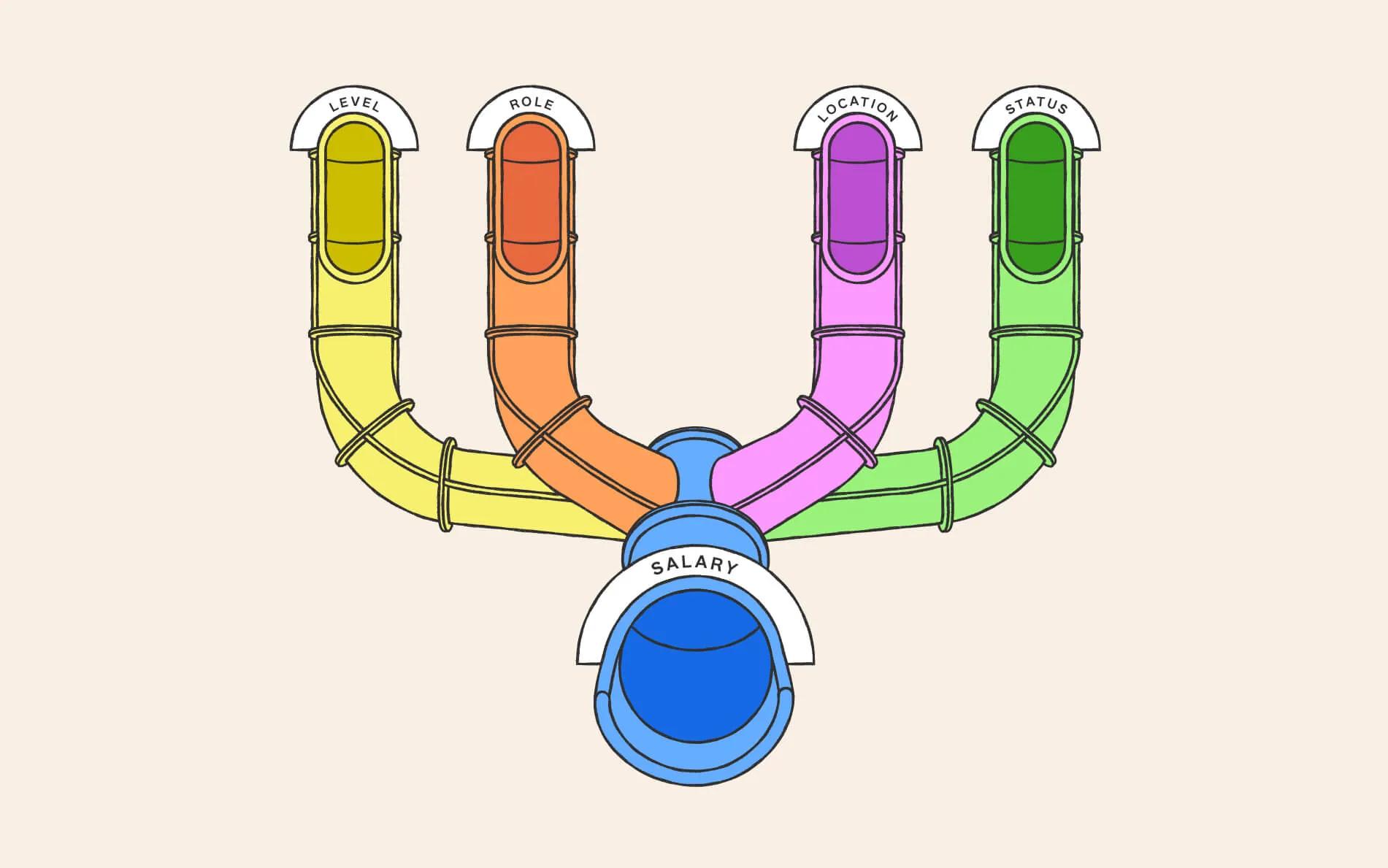Our salary calculator for remote teams

As you may know already, we're a fully-remote team of 32, now operating in 25 cities, across 9 countries and 6 timezones. Some of the most complicated things to manage in this environment are team communication (we're working hard on a radically new product) and payroll.
Payroll is complicated because we don't have legal entities in all 9 countries. Each nation has specific administrative rules and tax systems, social contribution schemes and retirement benefits. Our 1-person finance & admin team EITHER has to manage payroll in 32 different (but fair) ways OR create a blanket salary system for all. We chose the former.
Why? It's a long story. Back in 2018 (when we went to YC), we discovered all the economic opportunities and tensions that characterized the gentrified Silicon Valley. Cost of housing, education and cultural displacement were insane. At the time, we told ourselves we would be a distributed team that'd take a stand against it.
That's one of the main reasons we've long been convinced that pay should be fair, not equal. Each employee in our team, no matter where they live, enjoy the same purchasing power (for the same role and level). But not the same pay.
In this post, we'll share how our model works, and why we've set it up this way. Looking for a shortcut? Check out the customizable spreadsheet at the end. We hope it'll help inspire other remote companies to adopt a fair-minded approach to salaries.
The formula: LRLS
To get the gross salary, we multiply our people level (base salary) by the role index by the location index and the setup status index. More explanations about each factor below.

Levels at Slite
We use the following criteria to assess the level (and base salary) of any role in our team. They're the same company-wide, regardless of team.
Each level has an area of impact, of ownership and key attributes. We discuss the combination of these 3 components when running our Performance Reviews.
School director paid more than our kids teacher? Not in our home. We're against having People Manager sit on top of our salary grid. So we created 2 paths: the Individual Contributor path and the People Manager one. There's no specific incentive for managing people over being an exceptional contributor.
Mind that 85% of our team is at or above level C, and we don't have any interns.

Roles at Slite
We purchased and adapted data from 2 providers specialized in tech & remote salaries (Optionimpact and Culpepper).
Why should the difference between tech and business roles be wider in Portugal than it would be in the US? Traditionally, companies would benchmark each role locally. This may make things more accurate but it brings another level of complexity. Also, it often undervalues certain business roles.
That's the reason why we base it on the impact each role has instead, while staying competitive on each market.
Location costs for Team Slite
There's a wild difference in cost of living between our 9 countries. According to Numbeo, our people in Argentina pay their monthly rent in average 7 times less than the ones in the US. But we don't want to force anyone to go to a cheaper country to afford a better life. That's what we call fair pay.
So we use the location index to adjust pay in each location. In most countries we pay based on the capital or main tech hub. In the US and Canada, we split the country in zones from 1 to 5 (from highest paid to lowest, respectively).
How we define statuses
Again, having people working at Slite in 9 countries means we have three different setups:
- Employees in France
- Contractors around the world
- Employer of Record (In Canada, US and Spain for now): employment is offered through a Deel entity
Now, A 70,000€ gross pay for an employee in France is worth much more than one of the same amount for a contractor in Germany. We directly pay social contributions for employees, while contractors have to manage and pay everything by themselves. That's unfair.
So we adapted and created an index for each country (or zone for US and Canada), to reflect a fair pay for every Sliter, no matter their status.
Exchange rates for our model
We make offers and pay everyone based on their local currency. Our main index is Euro, so we use the average exchange rate of the past 4 years to avoid extreme lows or highs.
Executive levels at Slite
Executives (VPs, C-suite, etc) have been excluded from the calculator and pay is benchmarked upon offer. There are wide differences between roles/areas and the compensation given usually includes a very competitive equity package.
The same applies for founders, as in their case there's a great deal of personal investment, risk, equity involved. Founders & executive level accounts for less than 5% of our team.
Final thoughts
Our approach to fairness remains subjective, but we like it better than paying everyone the same. Please use our data to make it to your own standards.
Also, I recommend to involve leaders and managers early on, especially if you want to change your salary model. The sooner managers can level their teams, the easier it becomes to make progress.
Many thanks to Keysa and Chris for working on this model in 2021.
Get the spreadsheet
Less talk, more numbers: Here's the model. And feel free to send your feedback on the Twitter thread.


Written by Clément Rog
Clément Rog is working in our Marketing team from Lyon, France. He loves geography, playing legos with his son, and sharing convictions about marketing or design.


